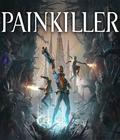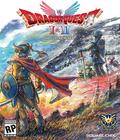Double Fine has often proven its ability to inject odd humor and style into almost anything. Psychonauts, the occasional adventure, and even Brütal Legend are testaments to a studio that has always done its own thing — with varying degrees of success. While Psychonauts 2 and an acquisition by Microsoft are on the horizon, they have a different project lined up for release: RAD. Luckily, the game is a fun take on roguelikes, even though it struggles in some key areas.
The story backdrop is quickly explained. The world is in ruins after not one, but two devastating apocalypses (never thought I'd need the plural form of that word in my life). Not only is the world in ruins, it's also stuck in a colorful neon version of the 1980s, but with monsters and relentless radiation. As expected, humans are hard to kill, so they hang around for a better day. Unfortunately, that's easier said than done. When our settlement is in dire need of additional power sources, we volunteer to venture into the wasteland — about 100 times in a row.
RAD is a roguelike, which means we'll attempt to beat the game over and over again until we eventually make it through in one piece. We can play as one of eight teenagers — who else would you send into the wasteland to face almost certain death? — armed with one of four melee weapons and hope for the best. Like any true roguelike, RAD throws you into procedurally generated levels that may look faintly the same but are different each time. This randomness also extends to the items you get and enemies you face, which can come down to pure luck.
In each level, players must find and activate a certain number of portals to open the gate to the final boss in that level. This is obviously easier said than done, due to several monstrous enemies around the stage. Basic combat with our baseball bat is clunky and slow, often leaving us vulnerable to incoming attacks. As far as basic combat variety goes, we have a regular attack, a jump kick, a smash attack to the ground, a forward jump attack and a chargeable spin attack. That's quite a range of attack types, but it's effective since you need to get reasonably close to your opponents to deal any significant damage without being obliterated.
One of the benefits of being a teenager is that you can absorb radiation (RAD), which eventually triggers a mutation. RAD is earned for every kill and can be boosted with certain items. Mutations come in two forms: endo and exo. The former is a passive buff, like resistance to certain elemental effects or the ability to see secrets and hidden enemies from afar, while the latter is an active mutation that can be used offensively. Mutations from killing enemies always yield an exo mutation once our RAD bar is filled, and endo mutations are received by either venturing into underground bunkers or through shots bought at vendors.
Mutations are RAD's bread and butter. There are several, including exploding skulls, poisonous "Cobruh" heads, blobs on your back that shoot projectiles, spiky thorns that deal damage, to name a few. There are certainly mutations that won't go well with your play style or may perform less well than others. You get plenty of mutations as you progress, and three of them can be active at any point. Unfortunately, it seems we cannot draw from all mutations at the beginning. The first stages of the game mostly yield the same range of mutations, which make the early run-throughs more tedious and repetitive.
Armed with our trusty bat and several mutations, we roam the levels in search of useful items and enemies to kill for RAD. We can go straight to searching the required portals to open the final gate, but it often pays to search every nook and cranny for useful items. Each level has at least one bunker, which won't be a visual marvel but is teeming with crates, enemies, and endo mutations, so they're worth a visit. They may also lead to areas that are otherwise inaccessible and often include a small vendor from whom you can buy artifacts.
Speaking of '80s apocalypse consumerism, the currency in dire times is obviously cassette tapes. They can be found all around the game world and literally pay for your well-being. They can be exchanged for goodies at vendors or put in a piggy bank if you want to keep them for a rainy day. After each level, we have the choice to continue to the next level or if stop back home to buy an item or lock away our precious tapes. Like any other roguelike, most progression is lost upon death with the exception of certain unlockables, special game rules, or saved tapes if we put them away before venturing out.
There's additional progression in our hub world. Buying at the shop at our settlement grows that shop to offer more items over time, making that a smart investment for future runthroughs. We may also swap unlocked melee weapons before returning to the wasteland or reap healthy fruit from the local garden as a health pack.
RAD fully embraces its '80s-style visuals in every aspect of the game. The colors pop, and the addition of a CRT filter and visual distortions is a nice touch. Enemies, while not always great, do their part in making the '80s apocalypse a dangerous turf. It looks phenomenal with the isometric view and the procedural environments. TVs are littered throughout the environment, which is a weird mix of old technical equipment and nature slowly claiming back the land. At times, the action may get too colorful and packed, making it tough to discern if you're being attacked (and from where), which isn't the best in a difficult game.
Certain areas and layouts repeat themselves quite regularly, which is good and bad. It's bad because it takes away from the surprise aspect of procedurally generated levels, and it's good because it means we can plan and learn from consecutive runs. As we progress, we get to see other stages and areas, and while they change the overall look, the basic style and layout are always somewhat present and noticeable.
Difficulty is a staple of the genre, but compared to other games of the same type, RAD packs a punch. It's not the hardest roguelike you'll ever play, but after a certain point, the game goes crazy with its monster. Expect enemies with ridiculously huge health bars and damage output that will strip you of any hearts in mere seconds if you're not careful. That's not necessarily improved by the fact that the game doesn't tell you anything. You just do your thing until, eventually, a loading screen informs you of a basic feature that you weren't aware of. Or it'll tell you that you've unlocked something without ever being clear about where to find it and how to use it. There is mysticism and intrigue, and then there's leaving you in the dark for no apparent reason.
Speaking of loading screens, RAD looks and runs well, but it has incredibly long loading times for everything. Jumping in and out of levels takes way longer than it does in a lot of AAA games. Given that this is a game designed to continuously start over and over again, that is something that just doesn't work too well.
Looking at RAD as a whole, it's a solid roguelike that shines in creative ideas, setting, and visuals. At the same time, it falls for the usual tropes, so if you're not a fan of roguelikes, you have been warned. Difficulty and repetition are exaggerated here, but it's due to repetition in powers and level design, which makes grinding for progression even more tedious than it has to be. For a $20 purchase, this is certainly a good new roguelike for fans of Double Fine and the genre.
Score: 7.3/10
More articles about RAD











 RAD is a 3D action rogue-like game set in a post-post-apocalyptic world, where humanity has faced Armageddon not once, but twice.
RAD is a 3D action rogue-like game set in a post-post-apocalyptic world, where humanity has faced Armageddon not once, but twice.



































